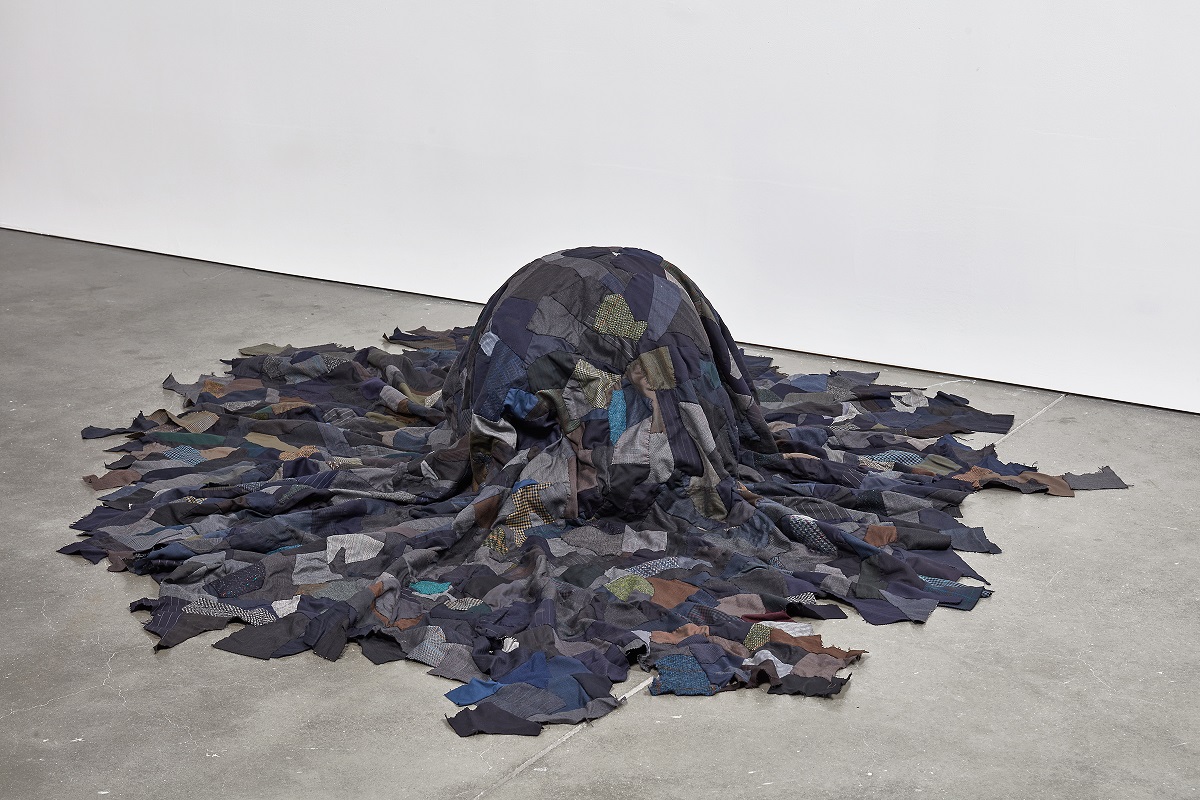
Charles LeDray, Untitled, 1992. Fabric, thread, and clothing, Approximately 24 × 96 inches (61 × 243.8 cm). Gift of Alvin and Barbara Krakow. Courtesy the artist and Sperone Westwater. Photo by Charles Mayer Photography. © 2016 Charles LeDray
In a distinctive and powerful body of work, Charles LeDray has employed diverse sculptural languages with materials such as needle-stitched cloth, carved human bone, and hand-thrown ceramics. In an era of high-tech production values, LeDray insists on a painstakingly manual fidelity that lends an air of deeply felt experience to his work. His diminutive sculptures transport viewers to moments of shared personal and cultural history, from childhood games to festive occasions.
LeDray learned to sew at home and intuitively developing his sense of the sculptural possibilities of vernacular forms and working most often at a micro scale. His objects carved from human bone are exquisitely rendered, with astonishing precision, to sixteenths of an inch. He creates ceramic pots that are smaller than many people’s fingers, yet technically perfect and extraordinary in their diversity. At the same time, LeDray’s work is in no sense “naïve”; he has studied and absorbed the most sophisticated art of the classical, modern, and contemporary periods.
Untitled is an assemblage of denim like fabric patches that covers a form suggestive of the body of a child, perhaps taking refuge or playing hide-and-seek. Possessing a compelling magnetism, the unique floor sculpture displays LeDray’s rigorous and virtuosic handwork. The artist works on pieces in meticulous detail over weeks and years, without the help of studio assistants. His process and techniques of sewing and carving recall the visionary work of folk and outsider artists, and his commitment to everyday material is consistent with the broad interest in manual craft and the handmade in contemporary art.
2011.3